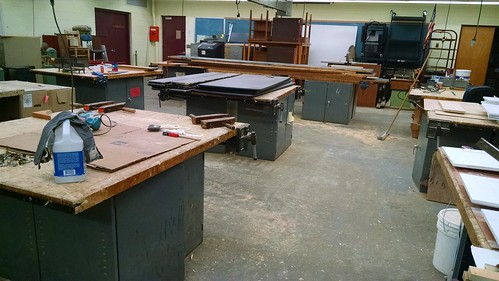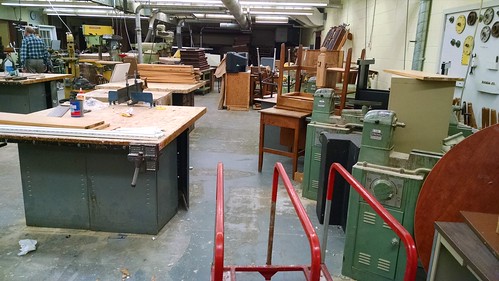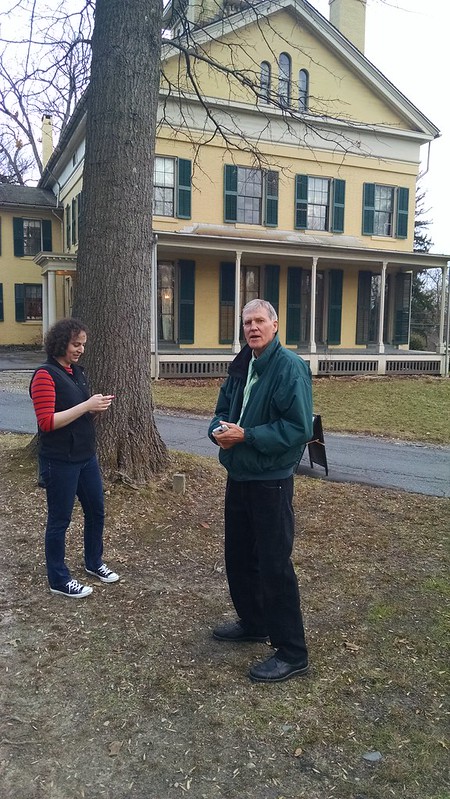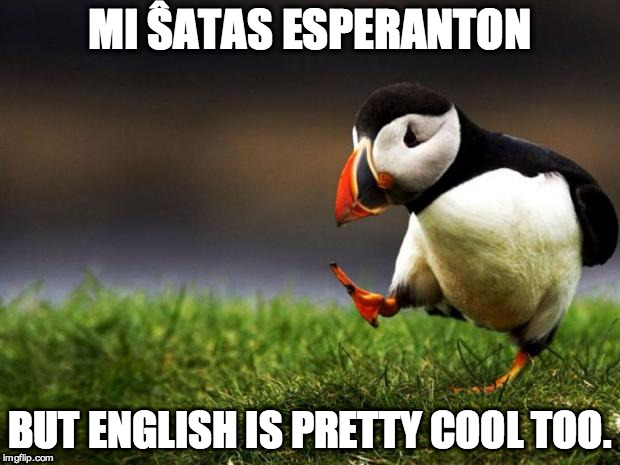For several years, Makers at Amherst Media has been looking for a location to serve as a Makerspace. Amherst Media itself has been looking for a potential new home for several years. One possibility that's been discussed is the Middle School building.
The Regional School District is considering consolidating their program into fewer buildings in order to focus resources on the academic mission in an era of declining enrollments. There have been discussions about back-filling the Middle School building with community organizations. Even now, the Middle School building is significantly underutilized and some community partners are already moving ahead: Amherst Leisure Services (LSSE) and Greenfield Community College (GCC) are already occupying space.
Amherst Media did a walk through several weeks ago to look at possible spaces. We wanted to start thinking about how we might be able to collaborate with potential partners and which spaces would be a good fit. After some discussion, we decided to pursue having the Makerspace locate there even in advance of when (or whether) the rest of Amherst Media comes. Since we're offering an afterschool program for the Middle School — and looking to collaborate more deeply with the public schools — being co-located is a good fit.
During our first walk through, we went through an old Wood Shop near the LSSE space. I thought the old Wood Shop looked like a perfect spot for a Makerspace, but it sounded like they already had plans for it and it's rather far from the spaces that Amherst Media is likely to occupy for their studio. More recently, however, it was proposed as a spot we might be able to use sooner than Amherst Media's relocation.
The Wood Shop is currently in use mainly for storage and intermediate processing (receiving old school materials and organizing them for disposal or repurposing). The room is very large and it's likely that it would be divided to preserve the separate institutional use. Standing roughly where the room might be divided, here's a picture looking toward the door.

And here's a second picture looking from the entrance toward the back of the room. Where the people are standing is roughly where the first picture was taken.

(There's an album with these and a few more pictures.)
Currently the room still has the old woodworking machinery (drill-presses, lathes, planers, and maybe a joiner). This machinery would not be seen as appropriate for current training or use and there would likely be a process to dispose of it. But the fact that there's power suitable for running equipment like this is a potential benefit of the space.
There are workbenches in the middle with power cords hanging down. I indicated I thought it was more likely we'd want tables for people to work at. But, again the availability of power is a huge win.
It also has a door directly to the outside and although that door could not be used as an entrance, it could enable easy delivery of materials.
There is still a ways to go before we can start moving forward. But it seems likely that we'll be able to occupy this space — perhaps permanently — and we should start thinking carefully about how we might be able to use the space. A bit of planning now will help focus what we need to do and enable us to begin looking for resources to accomplish our vision.
I can think of at least three things we need: a vision of how this space will work, a list of what we need to fulfill that vision, and an operations manual that formalizes how the Makerspace will work that can articulate with the Middle School procedures and practices. Let's get started.






